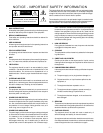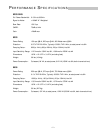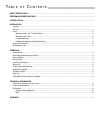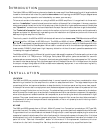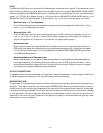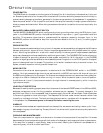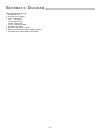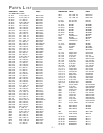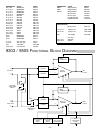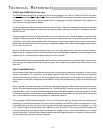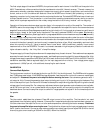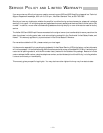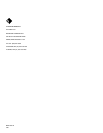
– 3 –
O PERATION
POWER SWITCH
The POWER switch is located on the front panel of the amplifier. An internal lamp indicates when it is turned
on. Standard practice is to turn the amplifier on last and off first when switching components individually to
prevent sending damaging transients, generated in the source components, to the speakers. It is possible to
leave the power switch in the on position and switch the amplifier remotely through a power distribution
block or preamp switched outlet. When doing so make sure the switch is rated for the current required by the
amplifier.
BALANCED/UNBALANCED INPUT SWITCH
The BALANCED/UNBALANCED switch configures the input grounding when using the RCA phono input
jacks. In the UNBALANCED position the balanced differential input return (–) port is grounded inside the
amplifier. This prevents noise pickup or unstable amplifier operation caused by the open input. In the
BALANCED position the differential amplifier inputs are connected to the hot (+) and (–) incoming signal
connectors.
GROUND SWITCH
Ground loops are characterized by a hum or buzz in the system and are caused by a voltage potential difference
between two points in a ground circuit. Ground loops are aggravated when multiple paths exist for a given
circuit. Mounting components in a rack with metal rails may introduce ground loops between associated
equipment, because the rails can establish an additional ground path. The CHASSIS/FLOAT switch allows you
to select the amplifier grounding scheme for best system compatibility. With the switch in the CHASSIS
position all signal grounds are referred to the chassis and power line ground. In the FLOAT position the signal
ground is decoupled from the chassis. The position of the switch is determined by the overall noise in the
system; choose the position which gives the lowest hum.
MONO SWITCH
Conventional two-channel stereo operation is obtained with the STEREO/MONO switch in the STEREO
position. For high powered single channel use, set the switch to MONO and use the left channel input and
the RED binding posts only for the output. For thermal considerations we do not recommend using less than
an eight ohm load on the amplifier when running it in mono. When the switch is set in the mono position
the left channel (+) and (–) inputs are connected to the right channel in reversed polarity, which inverts the
right channel output.
LOAD FAULT PROTECTION
Because of the self-protecting properties and fault tolerance of the lateral MOSFETs used in the 9303 and 9505,
elaborate voltage and current limiting protection schemes are not necessary. To prevent damage to the
amplifier from a fault in the loudspeaker load, the power supply B+ and B– rails are fused. Check these fuses
if the sound is garbled or there is no output. The fuses should not blow under normal use and a blown fuse
is usually an indication of a fault. The fault could be a bad connection, a problem with the speaker or a short
in the speaker line. Disconnect power to the amplifier before removing the cover.
WARM UP
In order to achieve the best sonic performance from the amplifier, we recommend letting it warm up for 1 hour
before beginning any critical listening. The amplifier will not deliver its full potential sound quality before this
time has passed.
CLEANING AND MAINTENANCE
There is no requirement for regular maintenance on the electronic components of the amplifier. If the case
becomes soiled it can be cleaned using a soft cloth and a mild detergent, such as spray window or glass cleaner.
If the amplifier is located in a particularly dusty environment cleaning the inside with compressed air or
vacuuming every 18 to 24 months is sufficient.




